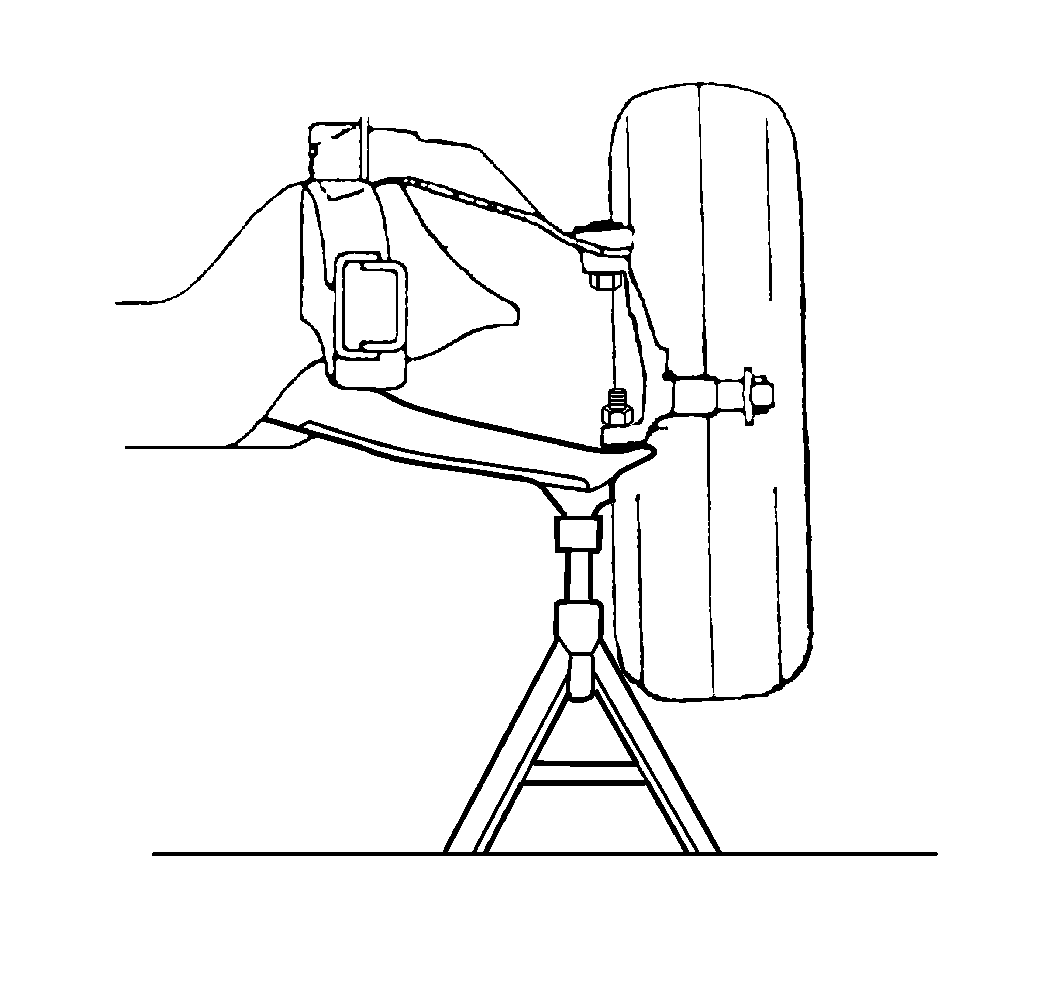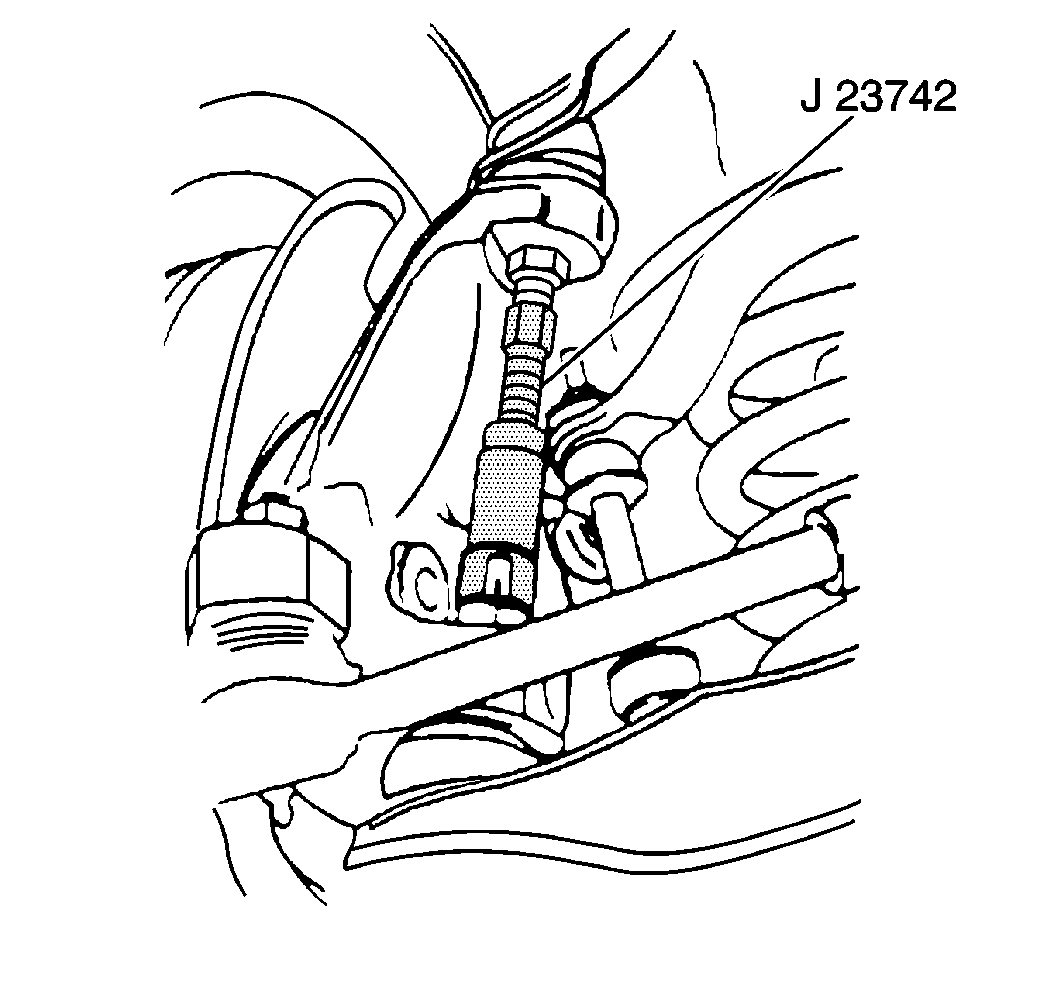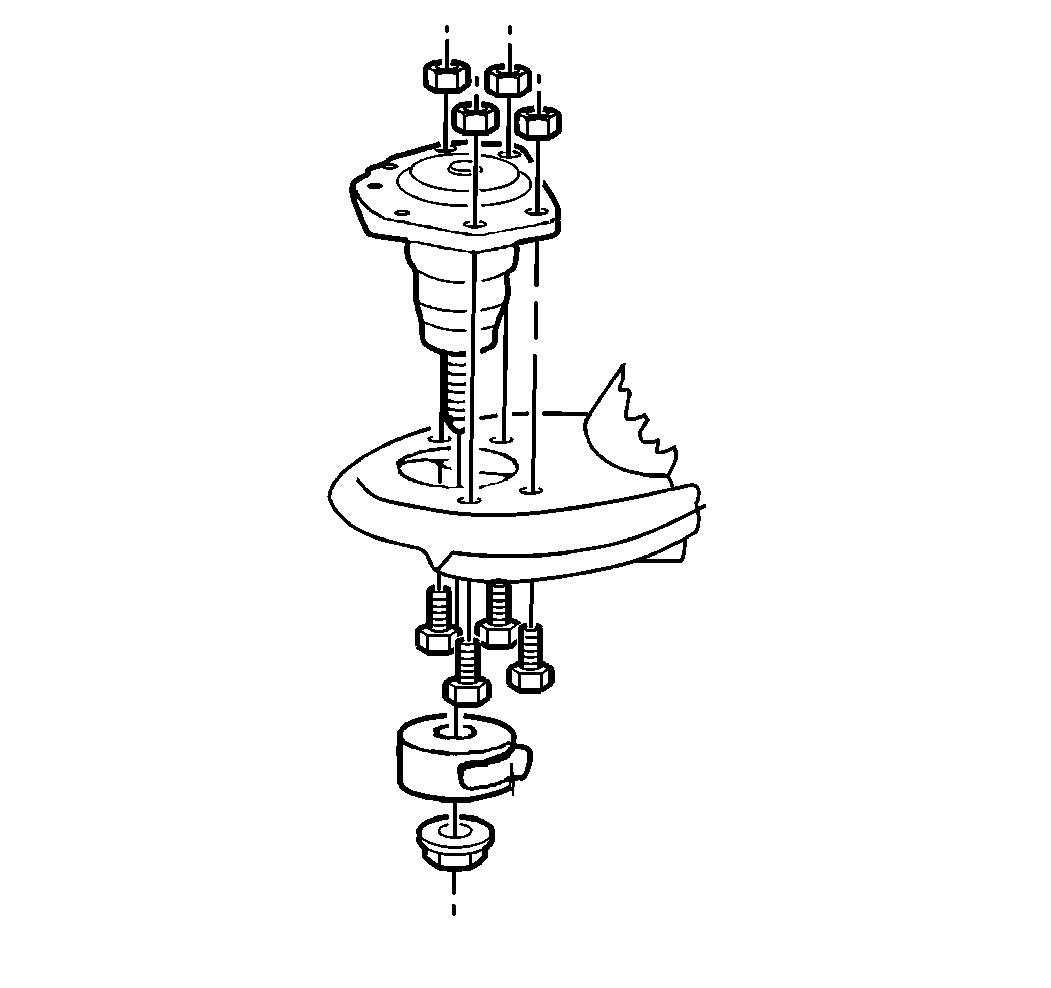Upper Control Arm Ball Joint Replacement Independent
Removal Procedure
For the upper control arm and components, refer to Upper Control Arm Replacement .
Tools Required
J 23742 Ball Joint Separator
- Ensure that the ball joint is spring loaded in the socket. If there is any lateral movement, or if the ball joint can be twisted in the socket with your fingers, replace the ball joint.
- Inspect the ball joint seals for cuts or tears. If any of these are found, replace the ball joint.
- Raise the vehicle on a hoist. If a frame hoist is used, support the lower control arm with a floor jack.
- Remove the tire and wheel assembly. Refer to Tire and Wheel Removal and Installation in Tires and Wheels.
- Remove the cotter pin from the upper ball joint. Loosen the nut two turns, but do not remove.
- Remove the caliper. Refer to Brake Caliper Replacement in Disc Brakes.
- Disconnect the upper ball joint from the steering knuckle. Use the J 23742 in order to separate the upper ball joint from the steering knuckle.
- Remove the nut. Lift the upper control arm free of the steering knuckle.
- Remove the ball joint from the upper control arm.
- Inspect the tapered holes in the steering knuckle that attach to the ball joints and the tie rod.


Caution: Floor jack must remain under the lower control arm during removal and installation to retain the lower control arm in position. Failure to do so could result in personal injury.
| 9.1. | Drill 6.35 mm (¼ in) deep holes in the rivet heads using a 3.175 mm (1/8 in) diameter drill bit. |
| 9.2. | Drill off the rivet heads using a 12.7 mm (½ in) diameter drill bit. |
| 9.3. | Punch out the rivets and remove the upper ball joint from the upper control arm. |
| 10.1. | Remove any dirt. |
| 10.2. | If any tapered hole is out of round, deformed, or damaged in any way, replace the steering knuckle. |
Installation Procedure
For the upper control arm and components, refer to Upper Control Arm Replacement .
- Install the upper ball joint into the upper control arm.
- Connect the upper ball joint to the steering knuckle. The upper ball joint must be fully seated into the steering knuckle.
- Install the upper ball joint nut.
- Install the cotter pin.
- Install the upper ball joint grease fitting.
- Grease the upper ball joint until visible. Use the recommended lubricant. Refer to Fluid and Lubricant Recommendations in Maintenance and Lubrication.
- Install the caliper. Refer to Brake Caliper Replacement in Disc Brakes.
- Install the tire and wheel assembly. Refer to Tire and Wheel Removal and Installation in Tires and Wheels.
- Lower the vehicle.
- Check the front wheel alignment. Refer to Wheel Alignment Specifications in Wheel Alignment.

Notice: Use the correct fastener in the correct location. Replacement fasteners must be the correct part number for that application. Fasteners requiring replacement or fasteners requiring the use of thread locking compound or sealant are identified in the service procedure. Do not use paints, lubricants, or corrosion inhibitors on fasteners or fastener joint surfaces unless specified. These coatings affect fastener torque and joint clamping force and may damage the fastener. Use the correct tightening sequence and specifications when installing fasteners in order to avoid damage to parts and systems.
| 1.1. | Position the ball joint into the upper control arm and install the 4 attaching bolts and nuts. |
| 1.2. | Attach the brake hose bracket, if equipped. |
Tighten
Tighten the nut to 25 N·m (18 lb ft).
Tighten
Tighten the nut to 122 N·m (90 lb ft).
Important: Maximum torque needed to align the cotter pin is 175 N·m (130 lb ft).
